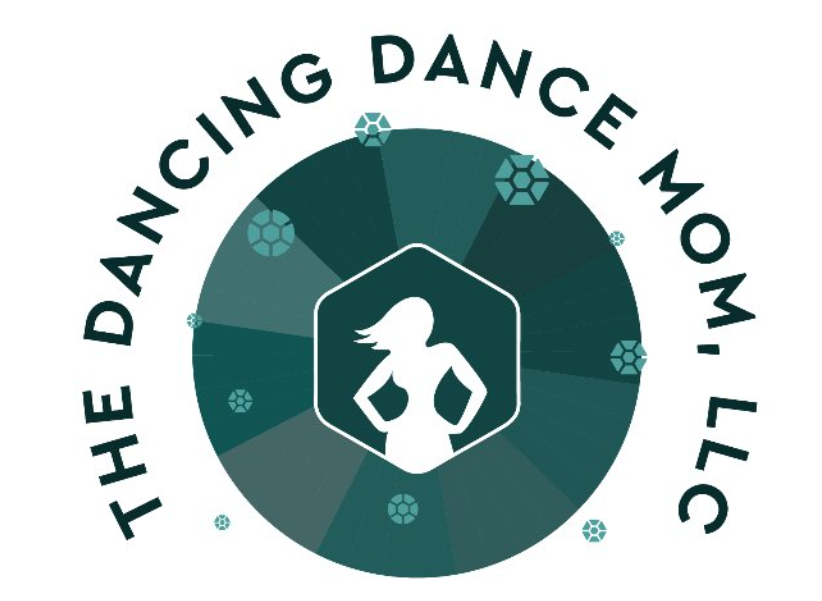
Imagine this: One day at pick-up, your child races to the car and yanks open the door, jumps in, and slams it closed with an energy that could rival a nuclear power plant. Bubbling with excitement, they yell, “I got a solo invitation!”
For many dance kids, this is the moment they’ve been waiting for their entire dance career. For others, it may create an internal conflict (“Do I really want this?”). And for still others, it’s more of a “meh” experience. No matter where your dancer falls on this spectrum, you need to consider several factors before you say “yes.”
Who Gets It?
So, how did your child get this honor? Studio owners approach the distribution of solos differently. They might offer the opportunity to specific dancers that have met certain criteria, or they might allow families to put in a request. Some decide on a general number of kids that they would like to see take the stage, while others take it on a case-by-case basis. Still other schools may require a tryout or audition. Personally, I know of a school that offers solos to each and every dancer in their company! You’ll need to check with the staff of your particular school to find out how the process works there.
What’s the Goal?
Generally, dancers take on a solo for one of two primary reasons. The first is that they simply want more experience and training. Dancers in this category might be experimenting with a new genre, need a little nudge to take their skills to the next level, and/or do not really care if/where they place. Dancers in the second school of thought are focused more on being competitive, with hopes of placing high during the overall awards.
Of course, the two categories are not mutually exclusive. And honestly, both philosophies have their merits.
But in order to make it a positive experience overall, the more competitive dancers (that are intent on placing and earning recognition) should learn to set goals that do NOT focus on where they fall in the overall placements. After all, they can only control what THEY bring to the stage themselves, and should not consider the event a failure if they do not score a top spot (especially when the competition is fierce).
Before your child commits to a solo, have a frank, honest discussion with them about the WHY behind their motivation to do one. All feelings are okay, so avoid shaming them if they say they want to win. You can simply point out that they have no control over the skill level of other dancers, and help them to formulate a more positive, productive goal (one they have control over) to focus on (see SMART Goals for Dancers).
Are They Ready?
Read the Room
Consider the factors that will directly (and indirectly) impact your child’s success with a solo. Taking cues from your child (and their teachers) will help guide your maternal sense of whether it’s a good idea or not.
First, take inventory of how your child reacts when it’s time for dance (whether it be a class or a performance). Do they balk and complain, or are they enthusiastic and compliant? If it’s the former, then now might not be the right time to move forward with a solo.
If you think, “Wait, MY kid?!” when your child scores an invitation, going directly to the teacher is a wise move. Leave your emotions at the door so that you and the instructor can have an honest discussion of their perspective and your point of view. Children are usually different creatures at school than they are at home, so getting the teacher’s take will help you peer into the window of their dance lives.
If, on the flip side, you have no qualms about your dancer taking on this new challenge, ask your child what they think. Kids that have concerns might have their fears put to bed after a talk with a trusted teacher, so reach out if you feel that might be helpful. But if your young’un feels confident and excited, that may be all the assurance you need to move forward.
The Right Time?
Sometimes, you might have to be the bad guy and turn down the opportunity if you do not believe they are ready for the awesome responsibility of a solo. While it might be of little comfort to your child, explain your reasons clearly and simply.
Keep it positive by avoiding accusatory language (“You never practice at home when you’re supposed to,” for example). Instead, focus on the demands of a solo (i.e., “Solos require many hours of at-home practice, and that is beyond what we can commit to right now.”). If you believe that a solo might be in your child’s future, communicate that enthusiastically. Doing so will keep the door open to a future offer.
If your family decides to move forward with it, congratulations! This experience will be one that your child remembers, and can have a tremendous impact on the person they become.
Choices, Choices
Depending on your particular studio, your input regarding genre, choreographer, song, and even costume might be requested (or at least considered). You’ll want to have a conversation with your dancer about what the purpose of the solo is before deciding on these factors.
Genre
If one of the goals of having a solo is to build a dancer’s confidence, it probably makes more sense to choose a genre that they are comfortable with already (at least to some degree). Expecting a lyrical dancer to tackle a hip-hop solo with little difficulty and great success is unrealistic, and would likely have a negative impact on the child’s self-esteem if they are intent on placing.
Solos can be great opportunities for your dancer to stretch beyond their current limitations, however. One of my girls’ teammates has expressed interest in becoming a Radio City Rockette, so she took on a precision jazz solo (in heels, no less). It gave her valuable experience, and she earned some special awards and recognition for staging something unique.
However, don’t be surprised if you aren’t asked for your opinion. Many managers would rather select a piece that they feel would work best for the dancer than take requests from the families.
Song and Costume
Again, allowing parents to weigh in on the particulars of a solo varies greatly from studio to studio. While some might take requests, others won’t even entertain them.
If you are given the choice of song, pick something that will resonate with your child within the chosen genre. For example, Thing 2 loves powerful lyrical numbers, so we work to find something that honors that (my sister does a masterful job of this). When going with an older song, ask some honest dance people (parents, teachers, etc.) for some feedback; it might be overused and/or “dated.” No matter how much one person loves a song, gather opinions from those you trust to get a more objective evaluation.
Another great resource for song suggestions is the Facebook group Competition Dance Music for Solos, Duets, Trios, and Groups. You can always ask for input in other dance mom forums on social media as well. Please do the world a favor: Do NOT choose age-inappropriate songs for your dancer, no matter how cool or popular you find them. The audience thanks you in advance.
Similarly, you can reach out to dance mom forums if you’re tasked with finding a costume. Many catalog companies allow you to browse on their websites as well (like Weismann and Glamour). But many teachers will want to choose the costume themselves so it matches and compliments their choreography.
Big Bucks
Listen, if you’re struggling to pay your dance tuition each month, a solo is probably not a realistic option for your dancer right now. The costs are considerable, to say the least. First, you’ll need to pay for the choreography, costume, and competition entry fees. You may also be required to pay a song-cutting fee, rehearsal costs, and possibly more. If money is an object for you, ask the director to give you hard numbers (as many as possible) before you sign on the dotted line.
More Advice
I solicited the dance moms in The Dancing Dance Mom’s Facebook community for some words of wisdom, and they offered the following:
Experience Matters
Put an entire competition year under your belt before considering a solo. This will help you get a feel for how much chaos a competition day involves, and might make you think twice before deciding to add more demands on your time and sanity.
Prepare your child for the possibility that their friends may place above them. Help them rehearse what to say and do in such situations so they can handle them with grace and dignity.
If your studio allows it (and you think it could benefit your dancer) consider enrolling the solo in an “outside” competition (one that your studio isn’t bringing groups to). It’s a great way to debut a piece to get a feel for the stage before your dancer competes it in the presence of teammates.
Unconditional Support
Be ready to support your dancer with quick changes and long dance days. Often, solo divisions compete early in the morning or late at night, so they may be exhausted by the time the day is over. Help your dancer to understand that their teammates may not see them compete because of the time of day/night.
If your gut tells you that your child isn’t ready yet, look into having them participate in a duo/trio first. See Just Duo (or Trio) It! for more.
Make sure your dancer knows that each competition has different expectations. While some are more about the razzle-dazzle elements, others are more about the artistic merits of a piece, and still others focus mostly on technique. Even if they place high in one competition, they are not guaranteed to do well at another. Help them keep their egos in check, and to keep their expectations realistic.
Thanks to everyone that contributed!
The Final Word
The dance world can be fickle, so avoid setting unrealistic expectations about how your child’s solo will fare. Focusing on the growth and experience a new solo can facilitate is your best bet. Understand that there will be ups and downs, so planning ahead for the possible outcomes (good, bad, or “mid”) is a smart move.
Whatever you do, letting your child know how proud you are of them (and praising their efforts and willingness to take the stage alone) can go a long way regardless of the result.
Personally, I don’t think I could have done so at such a young age, and I’ve told my twins that from their very first solo performances. Believe me, they’ve had ups (winning titles, scholarships, exclusive invitations, and first-place trophies ) and downs (not placing at all, stumbling during a move they never had trouble with in rehearsals, noticeably losing an accessory onstage, etc.). But I truly believe that the strong young women they’ve become is partly due to their solo experiences.
Best of luck to you and your dancer as they take this big step!

